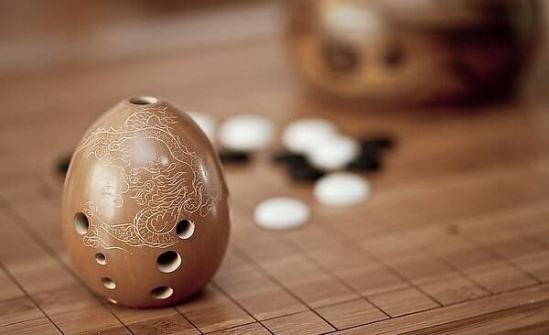Xun's Fingering Skills
The blowing skills of Xun can be divided into two types: air blowing and tongue blowing, and then together with fingering skills constitute its playing skills. The following is an analysis of Xun's pointing skills.

vibrato
It is to quickly open and close the whole hole with the finger on the sound hole, so that the sound has a fluctuating effect. The most commonly used vibrato are major and minor second, third and fourth vibrato, which can be used flexibly according to the characteristics and styles of different works. Vibrato practice is the most important part of finger movement skills, and requires flexible and flexible fingers during practice.
portamento
- Xun is a common performance technique, which is mostly used in humorous, humorous, low-pitched and sad music. This technique greatly enriches the expressiveness of Xun. Portamento is divided into three types: up-glide, glide and smooth.
- Portamento: After the primary note is played, the finger slides up to the second note (higher than the primary note) without any trace, and the exhalation strength increases accordingly.
- Glide note: After the original note is played, the finger slides down without trace to the second note (lower than the original note), and the exhalation strength is correspondingly weakened.
- Glide: After the first note is played, the finger slides up or down without trace to the second note and then returns to the original position, and at the same time, the exhalation strength is obtained by pressing the portamento and the portamento. Glide, also known as polyglide, is a combination of ups and downs.
portamento
The timbre is required to be mellow and clean, and the rhythm is accurate. The beginning of each portamento should be played with a light spit; in addition, don’t be nervous when sliding your fingers, and it is advisable to maintain a natural state. The voice should be soft, smooth, and inaudible.
gift
Generally used at the end of the phrase and before the end of the original tone, the short decorative tone, also known as the sending tone. The gift tone is a kind of decorative tone, which hardly occupies the time value of the original tone. It can be heard but not obvious. It should be short, light and fast when playing, and the ventilation should be timely and accurate.
duplication
On the top of the original sound, make short overlapping additions such as second, third, fourth, etc., down to the sound of the original sound. When playing the overlapping sound, the fingers should be opened and closed quickly, and all the movements of the passing sound should be made, but it should not be played as an obvious decorative sound. Duplications are divided into long and short, and should be flexibly applied according to works of different styles and characteristics.
beat
Use your fingers to tap the sound hole, or the sound hole below the sound hole, so that the sound hole emits a phase-separated sound, which is called playing. Tapping is also a common performance technique in Xun, and if used properly, it can add color and beauty to the music. When practicing, it is necessary to exercise the speed and strength of the fingers. The lower finger should not hesitate, the strength of the fingers should be strong, the equal sounds should be distinguished, the phrases should be coherent, and the notes should be clear. The combination of Qi and finger should be clean and neat.
When the hit and vibrato overlap, the hit comes out first, followed by the vibrato, and it sounds like it's happening at the same time. Remember: to connect tightly and cooperate tacitly.
Airplay
Use your fingers to punch the sound hole, so that the resonance sound from the inner cavity of the xun is called air-tapping sound. When playing the strumming, you don't need to play, but open the sound hole and play the sound hole that resonates well. The pitch is adjusted by hearing and using the lips to control the size of the blowhole angle. Air-tapping requires the fingers to have strength and flexibility, and to make the pronunciation accurate, suitable for playing deep and subtle melodies and imitating some special sound effects in nature.
Treble
When blowing high notes, xun should arch upwards, strengthen the mouth, and reduce the wind; the high notes can be easily blown.
If you can't play high notes, it may be because the playing method is incorrect or the instrument itself is not standardized, so you can't play high notes.
 渝公网安备 50010702504639号
渝公网安备 50010702504639号